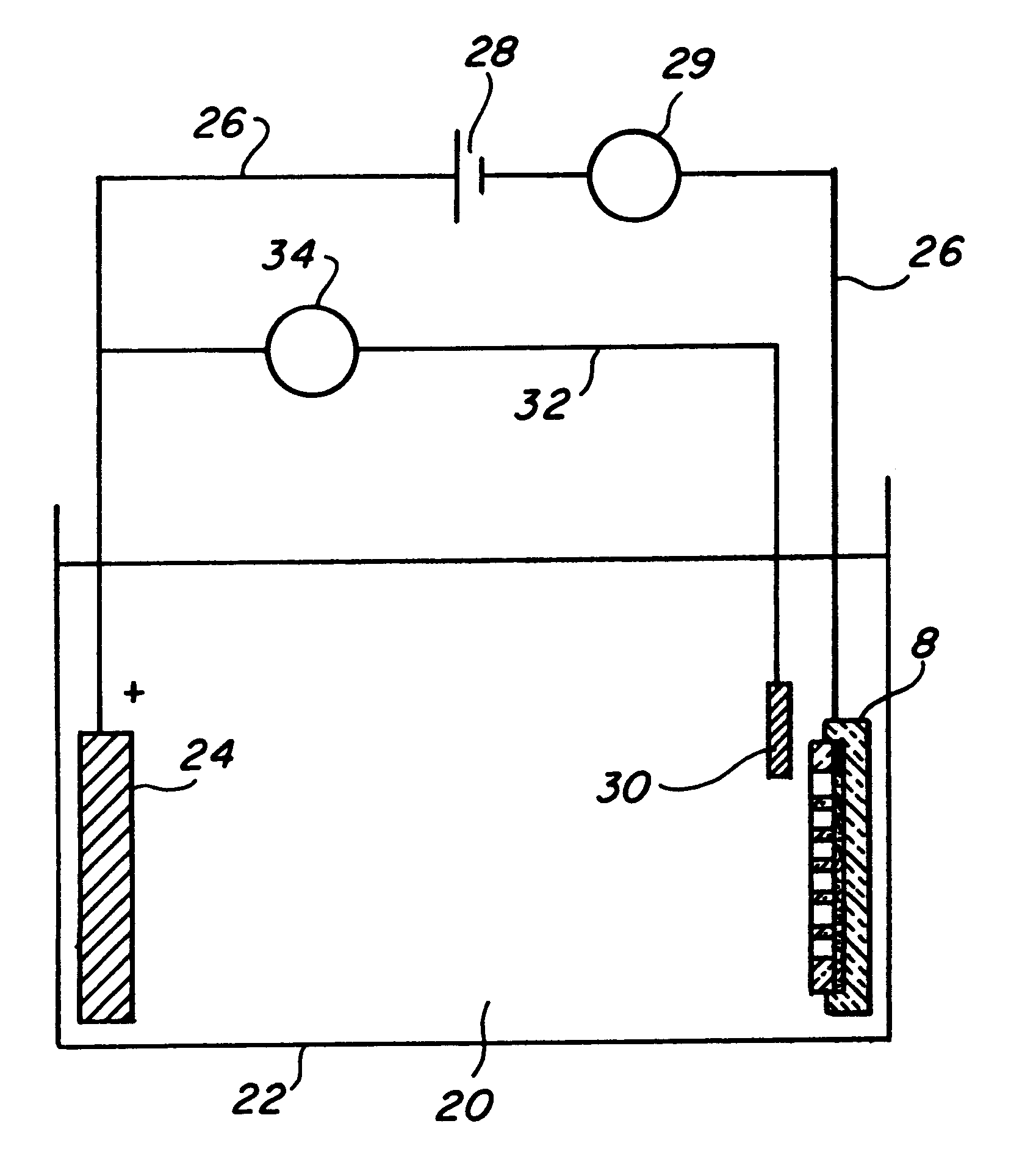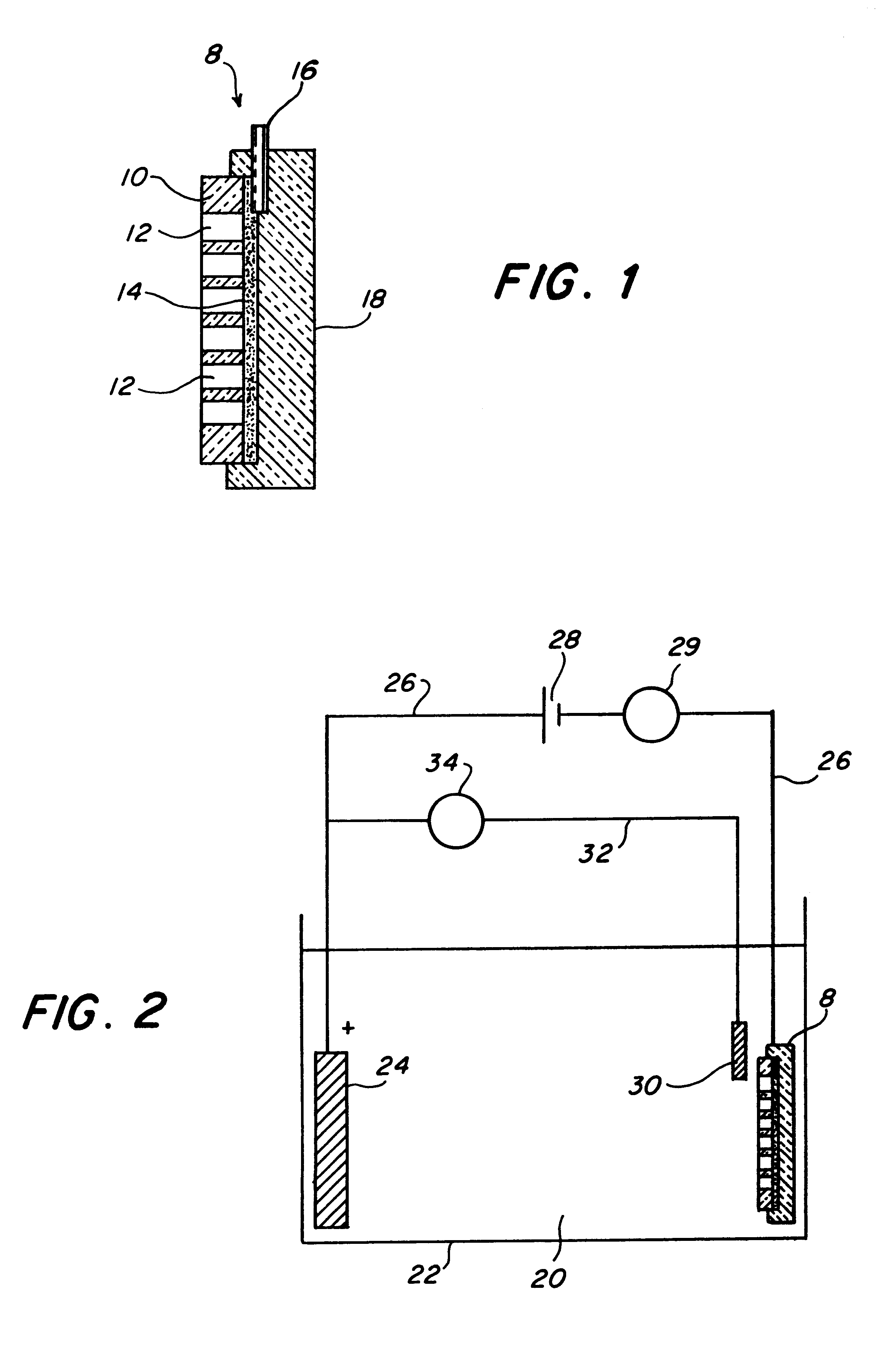Nanopost arrays and process for making same
a technology of nanopost arrays and nanoposts, applied in the field of nanopost arrays and process for making same, can solve the problems of high cost, complicated and expensive, and the development stage of most non-template techniques is still in progress, and achieves the effects of reducing the cost of production, and improving the quality of nanopost arrays
- Summary
- Abstract
- Description
- Claims
- Application Information
AI Technical Summary
Benefits of technology
Problems solved by technology
Method used
Image
Examples
example 2
This example demonstrates preparation of a nanochannel glass array using the electroplating apparatus of FIG. 2 wherein posts in the channels were made of cobalt and had diameter of 80 nm. The nanochannel glass template was about 19 mm diameter and the hole drilled into the glass cover slip was about 0.5 mm in diameter.
After mounting the nanochannel glass template over the hole in the glass cover slip with 5-minute epoxy, a chromium film 200 nm thick was sputtered onto one side of the glass template and a wire connection was secured to the chromium film. More of the 5-minute epoxy was used to electrically isolate the sputtered side. The counter electrode was still the same as in Ex. 1, as was the reference electrode. Homemade plating solution of pH of 3.6 was 252 g / l CoSO.sub.4.7H2O, 7 g / l NaCl, and 50 g / l H.sub.3 BO.sub.3.
The electrodeposition process was carried out at around 1.8 volts in about 4 hours using the plating apparatus of FIG. 2 and in the manner described in Ex. 1, abo...
PUM
| Property | Measurement | Unit |
|---|---|---|
| diameter | aaaaa | aaaaa |
| diameters | aaaaa | aaaaa |
| voltage | aaaaa | aaaaa |
Abstract
Description
Claims
Application Information
 Login to View More
Login to View More - R&D
- Intellectual Property
- Life Sciences
- Materials
- Tech Scout
- Unparalleled Data Quality
- Higher Quality Content
- 60% Fewer Hallucinations
Browse by: Latest US Patents, China's latest patents, Technical Efficacy Thesaurus, Application Domain, Technology Topic, Popular Technical Reports.
© 2025 PatSnap. All rights reserved.Legal|Privacy policy|Modern Slavery Act Transparency Statement|Sitemap|About US| Contact US: help@patsnap.com


